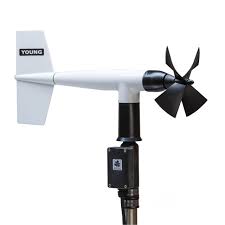Pyranometers
Sensors,
Meters, and Apps
Types of Pyranometers
There are two primary types of pyranometers: silicon diode and thermopile. Silicone diode sensors offer faster responsivity, cheaper cost, and lower maintenance when compared to thermopile. The main drawback, however, is that the silicon detectors are only spectrally responsive in a narrow part of the solar spectrum to determine broadband solar irradiance. In contrast, thermopile sensor technology can monitor the wide solar spectrum with increased accuracy. These differences make the thermopile technology mandatory for large commercial and utility-grade solar installations.
ML-01 Si-Pyranometer
The ML-01 is an industrial grade solar sensor designed for performance ratio measurements as well as irradiance measurement applications for the meteorological, agricultural and environmental studies. The compact dimensions of the sensor body make it easy to integrate it within any application using it with or without a mounting plate.
MS 40 Pyranometer
The MS-40 is an ISO 9060:2018 Class C pyranometer which is based on the EKO's universal sensor platform. It is the most cost effective irradiance sensor to measure solar irradiance across the full solar spectrum. It can be used for agro meteorological networks and professional small scale PV sites where solar radiation is taken seriously.
MS 60 Pyranometer
The MS-60 is a ISO 9060:2018 Class B (First class) pyranometer with improved performance. The new double dome construction provides lower offsets and cosine errors. The MS-60 pyranometers are manufactured in a consistent way followed by strict quality inspection and performance evaluation. This sensors offers a unique calibration compliant to the international standards defined by ISO/IEC17025/9847. The sensor has a 5 year warranty with a 2 year re-calibration interval recommended and it is no longer necessary to change the desiccant.
MS 80 Pyranometer
MS-80 is a unique pyranometer compliant to the "fast response" and "spectrally flat" sub-category under ISO 9060:2018 Class A. The innovative patented design was inspired by the combination of latest technologies and state-of-the-art thermopile sensor, enabling a breakthrough in unprecedented low zero-offset behavior and fast sensor response.
PVmet Weather Stations and Pyranometers
The PVmet 75, 100, 150, and 200 include pyranometers. The PVmet 150 includes a second class thermopile pyranometer. The PVmet 500 supports up to 3 silicon diode / thermopile sensors in any combination.
Weather Sensors
Specification Sheets
- ML-01 Pyranometer
- MS-40 Pyranometer
- MS-60 Pyranometer
- MS-60S Pyranometer
- MS-80 Pyranometer
- Shadow Ring - About
- Shadow Ring Specification
Global Irradiance
Global solar irradiance is the most common solar irradiance measurement. In this instance, the pyranometer mounts level to the ground. If monitoring a large area, the sensor should be located high enough so it is not impacted by roads and other objects.
Plane of Array
When monitoring plane of array, the irradiance sensor is on the same angle as the solar panels. The sensor can mount on the array or on a bracket that can adjust the sensor angle.
Albedo
Bifacial PV panels generate power by sunlight reflected off the ground. Specific ground covering can amplify this effect. The term “albedo” is the ratio of reflected irradiance vs. global irradiance. Albedo is becoming a requirement in larger projects.
Diffused
The fourth type of irradiance that can be measured is “diffused”. This is irradiance that is not directly from the sun, but rather from the clouds and sky. PowerWise offers a shadow ring for diffused measurements.
About PowerWise
PowerWise is a proven innovator of monitoring and control technology.
